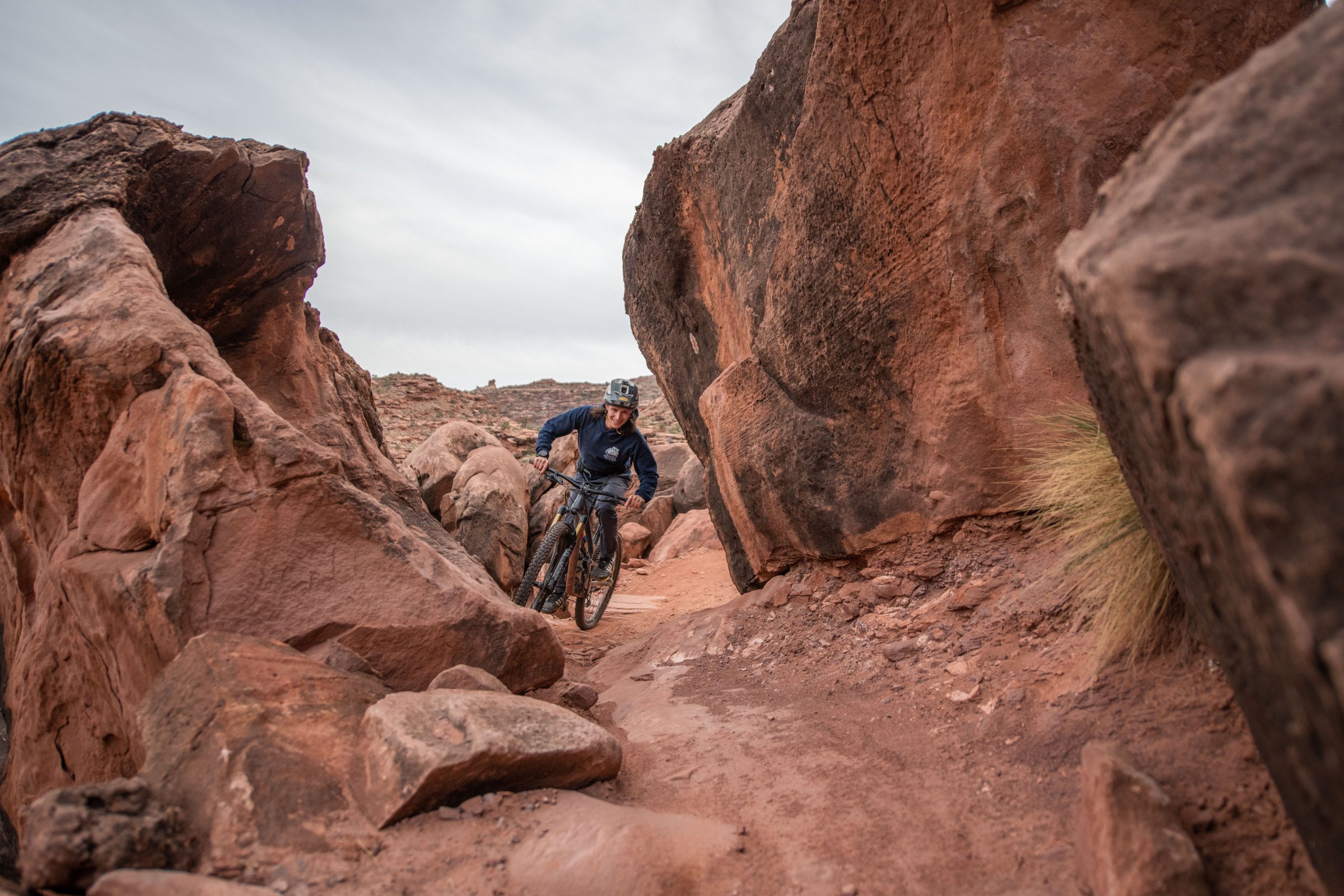Some information may be outdated.
Over a decade ago, two friends—Tyson Swasey and Nick Badovinac—were sitting in Love Muffin cafe, talking about a rock shelf near the 4×4 route at the Amasa Back area off Kane Creek Road. The shelf looked like it held promise for a mountain bike trail.
“I was like, well, are you doing anything right now?” Swasey recalls asking his friend. The two went and hiked the area, which was “pretty gnarly,” Swasey said, but didn’t find any deal-breaking features in the landscape beyond a few narrow squeezes.
“We were just blown away,” Swasey said. “Thinking that this will be a big project, but it could work.”
The two contacted Scott Escott, who worked with Trail Mix at the time, with their idea. From there, the project took off—there were no surface occupancy issues in the area (issues like bighorn sheep migration areas, nesting habitats, or archaeological sites), and Trail Mix quickly wrote a proposal for the trail. It kept snowballing: Swasey and Badovinac spent a month and a half designing the trail, the Bureau of Land Management completed an environmental assessment with a thumbs-up to proceed, and Swasey was hired as the trail crew leader for what would become the Captain Ahab mountain bike trail, known as one of the most exciting, scenic, and challenging trails in the country.

This year, it turns 10 years old. The trail was a huge effort by the community, Swasey said—by Trail Mix, the BLM, and the hundreds of volunteers who helped build it then and have helped maintain it over the years.
“It’s pretty amazing,” Swasey said. “It’s surreal for me that it’s 10 years old. Captain Ahab was the spark for the last decade of my trail-building career.”
On Saturday, March 11, all those people, and the trail itself, will be celebrated during a Captain Ahab anniversary event. The full day of celebrations will begin at 8:30 a.m. with coffee and donuts at the trailhead, followed by a trail work party from 9:30 a.m. to 12 p.m., then a group ride/run/hike of the trail with members of Trail Mix, Grand County Trails, and the BLM on site to chat about the trail’s history.
In the evening, starting at 7 p.m., there will be an after-party at Dewey’s Restaurant—the local trail designers, planners, and builders will talk about how the trail came to be and how it’s currently maintained.
The biggest change on the trail is its rockiness, Swasey said. He and Badovinac designed the trail with erosion in mind, but in the last decade, floods and rock falls have changed the landscape significantly. The trail team returns to the trail every winter to rebuild sections of it, and Swasey said it’s amazing to see how much the trail can change over the course of just one rainstorm.
Plus, of course, the trail is now extremely popular. The trailhead itself has become a multi-sport hub: on a warm spring day, bikers, BASE jumpers, climbers, runners, hikers and 4×4 enthusiasts can all be found at the Amasa Back trailhead parking lot.
“It turns into this big social scene up there—people lizarding out on the rocks, just soaking up the sun,” Swasey said. “That’s always a pretty awe-inspiring moment.”
Appreciate the coverage? Help keep local news alive.
Chip in to support the Moab Sun News.





